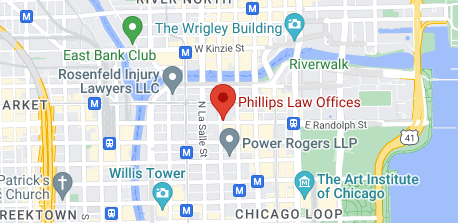Have you ever heard about rotator cuff injuries? They’re pretty common and can cause a lot of pain in your shoulder. People often wonder how much money they might get if they’re hurt and need compensation. Well, the average settlement amount for a rotator cuff injury can vary depending on different factors like the severity of the injury and the circumstances surrounding it. So, let’s understand and find out more about settlement value for your rotator cuff injuries.
Understanding Rotator Cuff Injuries
Rotator cuff
The rotator cuff is a group of muscles and tendons in your shoulder. It’s made up of four main muscles: the supraspinatus, infraspinatus, teres minor, and subscapularis. These muscles work together to keep your shoulder stable and help you move your arm in different directions. The tendons of these muscles connect the muscles to the bones of the shoulder. Together, they form a cuff around the head of the upper arm bone, allowing for smooth and coordinated movements of the shoulder joint.
Common causes of rotator cuff injuries
Rotator cuff injuries can happen for various reasons, but some common causes include:
Repetitive overhead movements: Activities like painting, swimming, or playing tennis that involve repetitive overhead motions can put strain on the rotator cuff muscles and lead to injury over time.
Trauma or sudden injury: Falls, lifting heavy objects, or sudden impacts can cause tears or strains in the rotator cuff muscles or tendons.
Degenerative changes: As we age, the tendons of the rotator cuff can degenerate or weaken, making them more susceptible to injury, even with minor movements.
Types of rotator cuff injuries
There are different types of rotator cuff injuries, including:
Rotator cuff tears: These can be partial or full-thickness tears of one or more of the rotator cuff tendons. They can occur suddenly due to an injury or develop gradually over time.
Rotator cuff strains or tendinitis: This occurs when the tendons of the rotator cuff become inflamed or irritated, often due to repetitive movements or overuse.
Rotator cuff impingement: This happens when the space between the acromion (a bony projection on the shoulder blade) and the rotator cuff tendons narrows, causing pinching or rubbing of the tendons during certain arm movements.
Legal Basics of Personal Injury Claims
Definition of a personal injury claim
A personal injury claim is a legal action taken by an individual who has been harmed or injured due to the negligence, recklessness, or intentional wrongdoing of another person, company, or entity. These claims seek to hold the responsible party accountable for the damages caused and typically involve seeking compensation for medical expenses, lost wages, pain and suffering, and other related losses incurred as a result of the injury.
Statute of limitations for filing a claim
The statute of limitations is a legal time limit within which a person must file a lawsuit or legal claim. In the context of personal injury claims, each state has its own specific statute of limitations that determines how long an individual has to initiate legal proceedings after being injured. This time frame typically starts from the date of the injury or from the date the injury was discovered. If the statute of limitations expires before a claim is filed, the injured person may lose their right to seek compensation through the legal system.
Importance of hiring a personal injury attorney
Hiring a personal injury attorney can be crucial for several reasons:
Legal expertise: Personal injury attorneys are knowledgeable about the laws and procedures governing personal injury claims. They can navigate the complexities of the legal system on behalf of their clients and advocate for their rights effectively.
Negotiation skills: Attorneys have experience negotiating with insurance companies and opposing parties to secure fair settlements for their clients. They can assess the value of a claim accurately and pursue maximum compensation.
Resources: Personal injury attorneys often have access to resources such as medical experts, investigators, and accident reconstruction specialists, which can strengthen a case and provide necessary evidence to support the claim.
Peace of mind: By entrusting their case to a qualified attorney, injured individuals can focus on their recovery and well-being without the added stress of handling legal matters themselves.
Factors Influencing Settlement Amounts
Severity of the injury
The severity of the injury refers to how serious the harm or damage is to the individual’s health and well-being. More severe injuries, such as broken bones, spinal cord injuries, or traumatic brain injuries, often result in higher settlement amounts. This is because these injuries may require extensive medical treatment, long-term care, and can have a significant impact on the individual’s ability to lead a normal life.
Medical expenses and treatments
Medical expenses and treatments incurred as a result of the injury play a significant role in determining settlement amounts. This includes costs associated with hospital visits, surgeries, medications, rehabilitation, therapy, and any other necessary medical care. The total amount of medical expenses incurred is typically considered when calculating compensation, ensuring that the injured party is adequately reimbursed for their healthcare costs.
Loss of income and earning capacity
Loss of income refers to the wages or earnings that an individual is unable to earn due to their injury. This includes missed work days, reduced work hours, or the inability to return to work altogether. Also, if the injury affects the individual’s ability to perform their job or pursue certain career opportunities in the future, it can result in a loss of earning capacity. Settlement amounts often take into account both past and future lost wages or earning potential.
Pain and suffering
Pain and suffering compensation is intended to address the physical pain, emotional distress, and mental anguish experienced by the injured individual as a result of the injury. This includes the discomfort, inconvenience, and limitations imposed on their daily activities and quality of life. While it can be challenging to quantify pain and suffering in monetary terms, settlement amounts often include compensation for these non-economic damages.
Contributory negligence and liability
Contributory negligence and liability refer to the degree of fault or responsibility attributed to each party involved in the injury-causing incident. In some cases, the injured party may bear partial responsibility for their own injuries due to their actions or negligence. Settlement amounts may be adjusted based on the comparative fault of each party, with higher levels of fault potentially reducing the overall compensation awarded.
Average Settlement Amounts for Rotator Cuff Injuries
The average settlement amount for rotator cuff injuries can range from around $5,000 to $50,000 or more, depending on factors like the severity of the injury, medical expenses, lost wages, and pain and suffering experienced. However, it’s crucial to remember that each case is unique, and settlement amounts can vary significantly.
Recent statistics and data analysis
Recent statistics and data analysis provide insights into the average settlement amounts for rotator cuff injuries. This information is often gathered from various sources, including legal databases, insurance records, and industry reports. By analyzing this data, researchers can determine trends and patterns in settlement amounts, such as the median or mean compensation awarded for rotator cuff injury claims.
Variations in settlement amounts based on factors
Settlement amounts for rotator cuff injuries can vary widely based on several factors. These may include the severity of the injury, the extent of medical treatments needed, the impact on the individual’s ability to work, and the presence of contributory negligence or liability.
Severity of Rotator Cuff Injuries That Drives Settlement Amount
When you hurt your rotator cuff, it can be a big deal. The rotator cuff is a group of muscles and tendons in your shoulder that help you move your arm. If you injure it, you might feel pain and have trouble moving your arm properly. Some injuries are minor, like a strain or a small tear, but others can be more serious, like a full tear that needs surgery to fix.
The severity of your injury can affect how much money you might get in a settlement if you take legal action. If your injury is really bad and affects your ability to work or do everyday tasks, you might be able to get more money to help cover medical bills and other expenses.
The amount of money you might get in a settlement for a rotator cuff injury depends on how bad the injury is and how much it affects your life. If your injury is mild and doesn’t cause too much trouble, you might not get as much money. But if it’s a serious injury that makes it hard for you to work or do things you enjoy, you could get a larger settlement to help you cope with the impact of the injury.
Your lawyer and the other party involved will look at things like medical records, doctor’s reports, and how the injury has affected your daily life to decide on a fair settlement amount.
Negotiating Your Settlement
Understanding the negotiation process
Negotiating your settlement involves discussing with the other party or their insurance company to reach an agreement on the compensation amount for your injury. It’s important to understand the steps involved in negotiation, such as making an initial demand, receiving a counteroffer, and engaging in back-and-forth discussions until both parties agree on a settlement amount.
Strategies for maximizing your settlement
There are various strategies you can employ to maximize your settlement amount. These include:
- Gathering strong evidence to support your claim, such as medical records, photos of the injury, witness statements, and documentation of expenses.
- Presenting a clear and persuasive argument for why you deserve the compensation you’re requesting, highlighting the severity of your injury, the impact on your life, and any financial losses incurred.
- Being prepared to negotiate and not accepting the first offer outright, as initial offers are often lower than what you may be entitled to.
- Considering the possibility of alternative dispute resolution methods, such as mediation or arbitration, if negotiations stall or if you’re having difficulty reaching a settlement.
Importance of documentation and evidence
Documentation and evidence play a crucial role in the negotiation process. It’s essential to keep thorough records of your injury-related expenses, medical treatments, and any other relevant information. This includes medical bills, receipts, doctor’s reports, employment records showing lost wages, and correspondence with insurance companies.
Strong evidence strengthens your position during negotiations, substantiates your claims, and increases the likelihood of reaching a favorable settlement. Additionally, maintaining accurate documentation helps you stay organized and effectively communicate your case to the other party or their representatives.
What is the average settlement amount for a rotator cuff tear?
The average settlement amount for a rotator cuff tear can vary greatly depending on factors like the severity of the tear, medical expenses, lost wages, and pain and suffering endured. Typically, settlements for rotator cuff tears range from a few thousand dollars to tens of thousands of dollars, but exact figures vary case by case.
How long does it take to receive a settlement for a rotator cuff injury?
The time it takes to receive a settlement for a rotator cuff injury can vary depending on factors like the complexity of the case, negotiations with insurance companies, and the legal process. In some instances, settlements can be reached relatively quickly, within a few months to a year. However, more complicated cases may take longer, sometimes several years, especially if the case goes to trial. It’s important to be patient and work closely with your attorney to navigate the process and ensure you receive fair compensation for your injury.
What expenses are typically covered in a settlement for a rotator cuff injury?
A settlement for a rotator cuff injury typically covers various expenses related to the injury, such as medical bills for treatments like doctor visits, surgeries, medications, and physical therapy. Additionally, it may include compensation for lost wages if the injury caused you to miss work or reduced your ability to earn income. Other expenses like transportation costs for medical appointments and future medical expenses may also be included in the settlement.
Contact Our Rotator Cuff Injury Lawyer In Chicago
If you’ve suffered a rotator cuff injury and need legal help, don’t hesitate to call our experienced personal injury lawyer in Chicago at (312) 598-0917 . We understand the challenges you’re facing and are here to provide the support and guidance you need to pursue your claim. Contact us today to schedule free consultation and let us help you seek the compensation you deserve for your injury. Your recovery is important to us, and we’re ready to fight for your rights.
Related Reads:
How long to settle a personal injury case?







